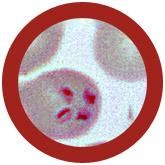Babesia (Babesia microti)
11,95 €
Out of Stock
Babesia es un parásito transmitido por garrapatas de rápida propagación que causan síntomas similares a la malaria como en los seres humanos .
Product Details
Additional Information
| Sizes | Giantmicrobes are based on actual microbes, cells, organisms and other critters, only 1,000,000 times actual size! Gigantic (GG) 40-60cm XL (XL) 25-38cm Original (PD) 12-20cm Minis (MM) 5-10cm each Keychain (KC) 5-10cm with clip |
|---|---|
| Materials | Plush from all new materials. Stuffed with polyester fiber fill. Surface washable: sponge with water & soap, air dry. |
| Packaging | Each plush microbe includes a printed card with fun, educational and fascinating facts about the actual microbe or cell. |
| Safety | Every product meets or exceeds U.S. and European standards for safety. For ages 3 and up. |
All about Babesia (Babesia microti)
| Name | This parasite got its name from the Romanian physician who discovered the genus, Victor Babes. Dr. Babes (1854-1926) made many significant contributions to the study of infectious diseases in his time. |
|---|
| Where It Lives | B. microti is a zoonotic parasite that causes infections in humans and other mammals. Zoonotic parasites are known to be spread from animals to humans to cause diseases. In the case of, B. microti the parasite reproduces in the deer tick, migrates to the salivary glands, and is transmitted to humans and mammals during the tick’s blood meal. Babesiosis has also been linked with blood transfusions due to the parasite’s persistence in human red blood cells. |
|---|
| Symptoms | The parasite finds its way into the (human) host red blood cells, causing malaria-like symptoms (fever, chills, sweating, and muscle weakness). The onset of symptoms can ranges from one week to several months. |
|---|
| Cure | Treated with anti-parasitic drugs and antibiotics. |
|---|
| History |
1957: First case reported in the U.S. found in the New England area, near Nantucket and Martha’s Vineyard. Big Outbreaks: 1975-1986: 216 cases of babesiosis reported worldwide, 200 of which originated in the United States. Recent Outbreaks: 2001: 560 cases of babesiosis reported in New York State, alone. 2009: The most recent report of transfusion-related babeosis fatality. |
|---|
| Fascinating Facts | This kind of infection is particularly harmful to people who have had their spleens removed, have underlying immunocompromising diseases, and the elderly. It’s commonly found co-infectious with lyme disease, caused by Borrelia burdorferi. |
|---|






